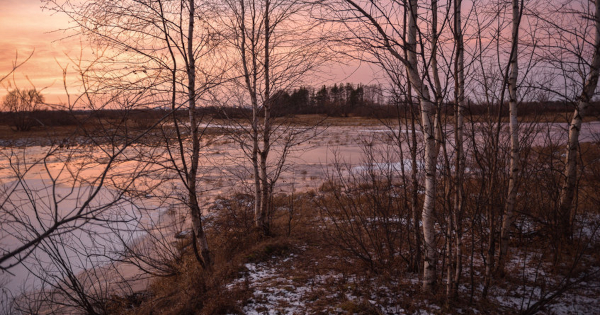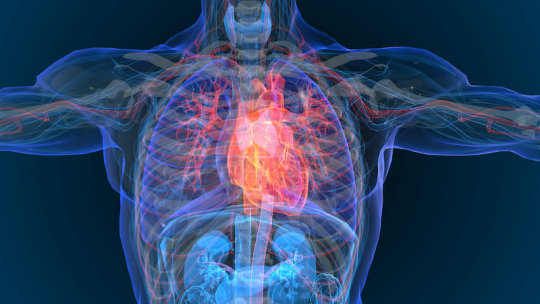.jpg.aspx?width=360&height=240&resizemode=force)
Getting Dark Early? How to Stay Happy
Ah, the blues. Is it the post-holiday letdown? The excess sugar? Less sunlight that comes with the winter season? Seasonal affective disorder (SAD) is the name often given to this phenomenon. It's a seasonally recurrent kind of major depression, with little known about how it affects people in the summer.[i]
About 10% to 20% of cases of recurrent depression follow a seasonal pattern. While a summer pattern isn't entirely ruled out, the predominant trend involves fall/winter depression with spring/summer remission.[ii]
SAD is distributed across the general population.[iii] Young adults and women, however, are most likely to experience it, with the reported gender difference following a 2:1 to 9:1 range. It has also been identified in children and teens. Here are some ways to combat SAD, and its less severe cousin "the winter blues," naturally.
1. Vitamin D
A 2015 study probed the relationship between 25-hydroxyvitamin D (25(OH)D) and depressive and anxiety disorders in a population of Finnish men and women ages 30 to 79.[iv] The study sample involved 5,371 subjects, of which 354 were diagnosed with depression and 222 with anxiety.
Subjects with higher vitamin D3 levels showed a reduced risk of depression. Higher serum concentrations of the nutrients were linked to a lower prevalence of depression particularly among men, younger people, divorcees and those who had an unhealthy lifestyle or metabolic syndrome.
"These results support the hypothesis that higher serum 25(OH)D concentrations protect against depression even after adjustment for a large number of sociodemographic, lifestyle and metabolic factors," wrote the authors.
2. Light Therapy
Widely investigated for treating SAD is light therapy or daily exposure to a box containing fluorescent lamps during symptomatic months. Regarding optimal dosing, 10,000 lux of full-spectrum or cool white fluorescent lights behind an ultraviolet shield is deemed the standard, with a recommended duration of 30 minutes to two hours per day for two to four weeks.[v]
Bright light therapy has been deemed effective for seasonal depression as well as non-seasonal depression.[vi],[vii] Evidence also shows that it may improve responsiveness to antidepressant treatments.
While light therapy and antidepressants previously showed comparable effectiveness in treating SAD, few studies directly compared them.[viii] A 2006 double-blind randomized trial, conducted in four Canadian centers across three winters, randomly assigned 96 patients to eight weeks of treatment: 10,000 lux light treatment and a placebo capsule, or placebo light and 20 milligrams (mg) of fluoxetine (brand name Prozac) a day.
Findings showed that while there were no significant differences in results between light therapy and antidepressant treatment, the former led to earlier response onset and a lower rate of adverse events relative to fluoxetine. Fluoxetine was linked with side effects such as agitation and sleep disturbance as well as palpitations, although both treatments were generally well-tolerated by the subjects.
3. Melatonin
In a 1986 study, researchers tested the hypothesis that melatonin mediated the effects of shortening days on SAD symptoms in the winter.[ix] Based on the results of three different studies, they found that melatonin secretion may be abnormal in SAD. It may play some role in the symptoms and the effects of light therapy, but was claimed unable to account for the phenomena all by itself.
Melatonin supplementation alone has yielded mixed results in clinical trials in winter depression. In a study, for instance, evening melatonin was no more effective than placebo in sustaining a desired antidepressant effect.[x] Yet some people may respond to 2 to 3 mg of melatonin at bedtime to support the resetting of their body clock.[xi]
4. Cannabidiol (CBD)
CBD, a constituent of Cannabis sativa, has drawn much interest in recent years for fending off a range of neuropsychiatric disorders as well as depression and anxiety-related disorders.[xii],[xiii]
CBD can be incorporated into one's diet through the winter months, particularly in cooking and creating CBD-infused ingredients to be used in common recipes.[xiv] Other common forms of CBD include CBD oil, capsules, paste, drops, crystals and food supplements.
5. Regular Exercise
Aerobic exercises have been demonstrated to be beneficial in treating non-seasonal major depression. Thus, they have been explored for SAD.
In a study, supervised physical exercise paired with bright light exposure appeared to be effective in enhancing mood and certain aspects of health in wintertime.[xv] In healthy subjects, exercise in bright light led to greater symptom relief than in ordinary room light and led to improvements in both depressive symptoms and vitality rather than just the latter.
© [12/28/21] GreenMedInfo LLC. This work is reproduced and distributed with the permission of GreenMedInfo LLC.
